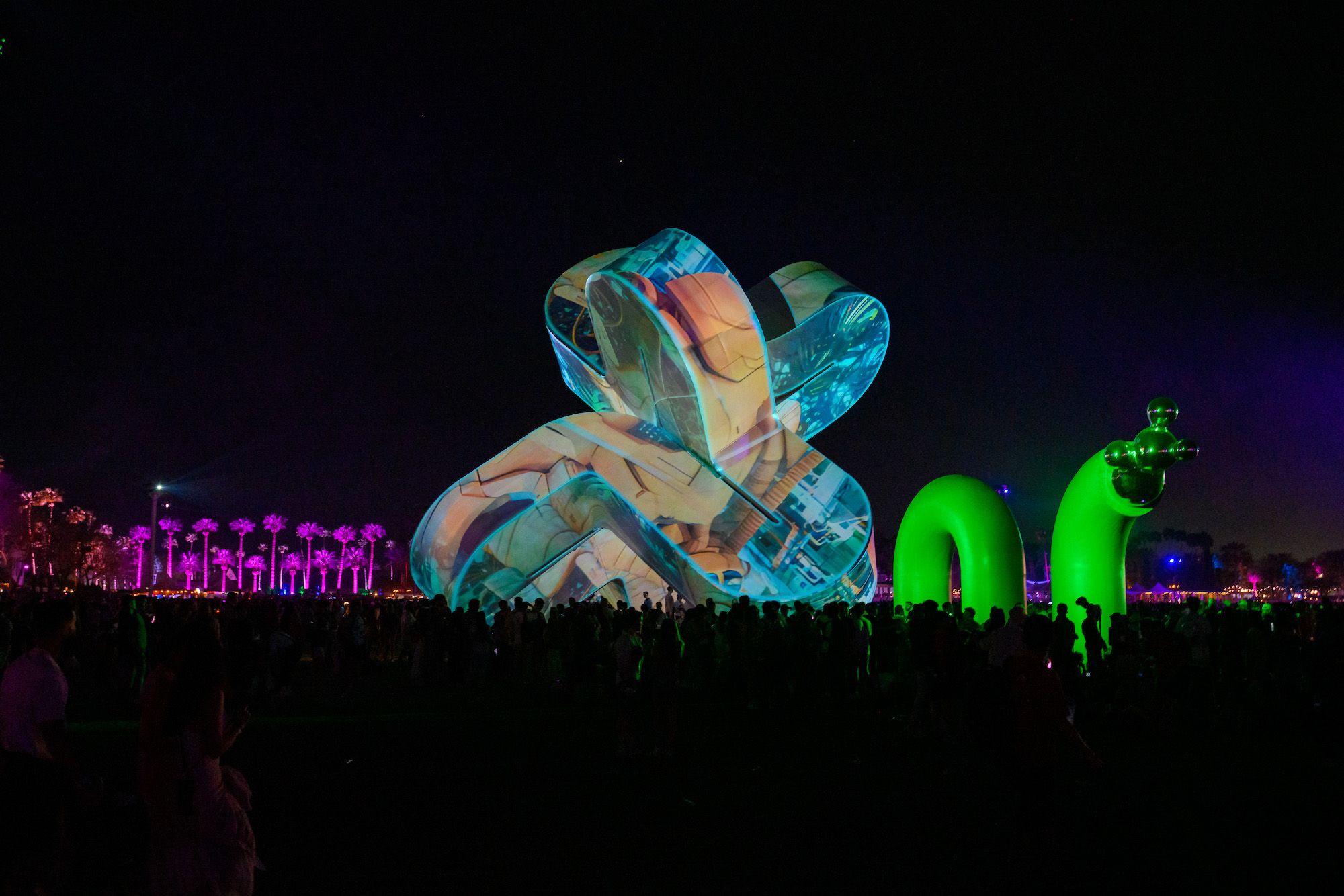The first weekend of the 2023 Coachella Valley Music and Arts Festival has come and gone, celebrating not only the best of music but of visual art, both locally and internationally. I was invited to meet with the slate of artists chosen by Paul Clemente with Raffi Lehrer for the Coachella Art Department to create bespoke art installations on the fields, and offered a chance to visit some of their other activations across the festival.
I started my afternoon of interviews with the most luxurious of transportation options available on the extensive polo grounds: a golf cart. I was whisked away by public art program specialist Sarah Scheideman and artist Sofia Enriquez deep into the camping grounds to see their woman-run Coachella Art Studio. Scheideman founded it as one of the first features in camping in 2008 that has turned into a well-oiled and loved activation with what she describes as “funky, weird crafts.”
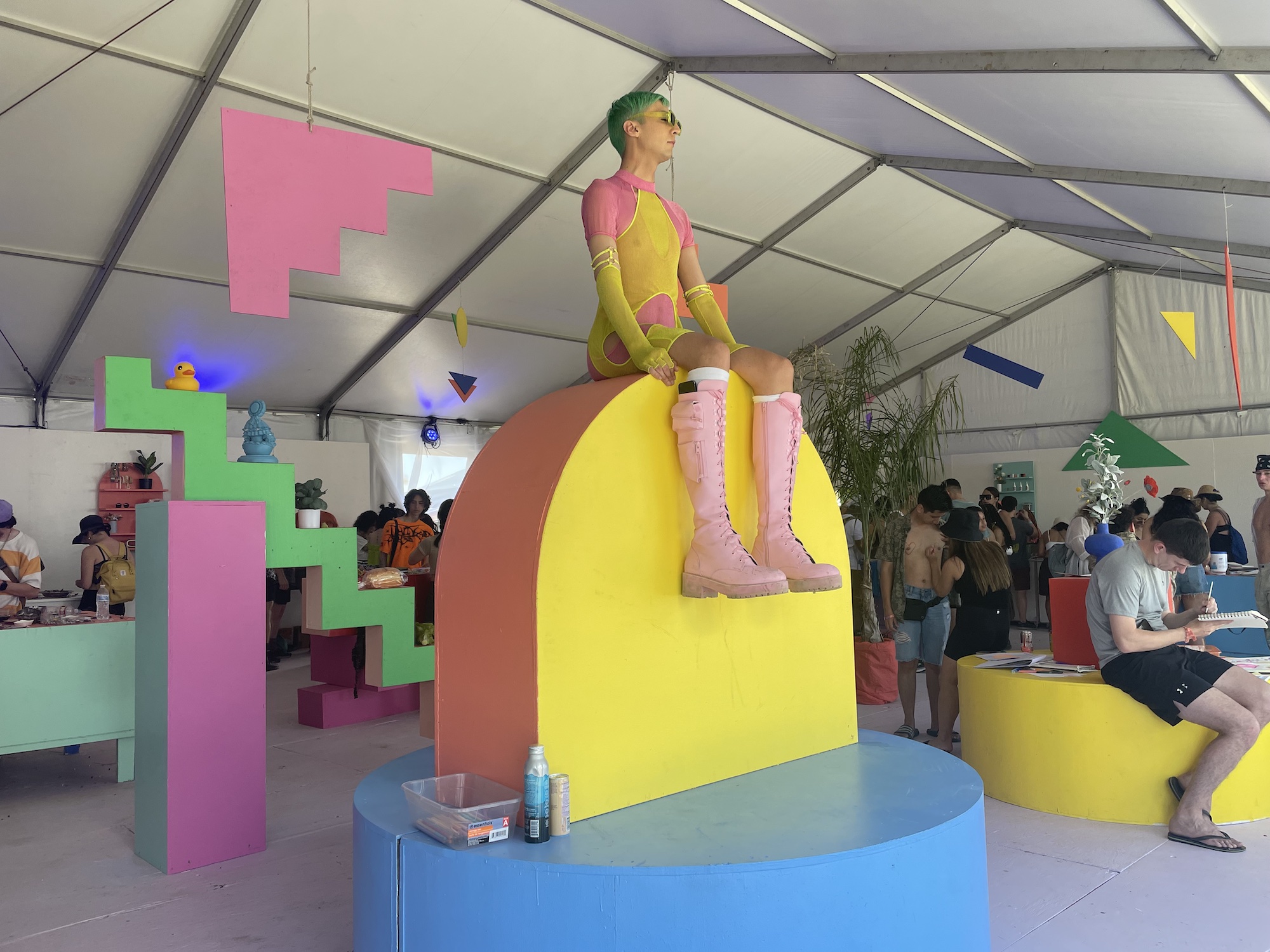
Live model poses for figure drawing in Coachella Art Studio. Image by Bianca Collins.
At Coachella Art Studio, as one expects, a DJ was bumping electronic music and the sun was shining. What I didn’t expect was an enthusiastic and dense crowd of people crawling all over a 5,000 square foot tent in a flow state of focus with a great sense of autonomy and empowerment. A lamination station stacked with printed images for making custom buttons was near a sewing station with embellishment materials and a rack of vintage clothing to “upcycle.” A custom aromatherapy station was next to a beading table, and close by, models for figure drawing in neon fishnet outfits struck poses on colorful geometric plinths.
“We give people their space to do them,” says Scheideman. “That’s the whole point why we’re here: to let people be their best selves.”
Creative opportunities abound in the Art Studio tent, but Enriquez’ story takes the cake.
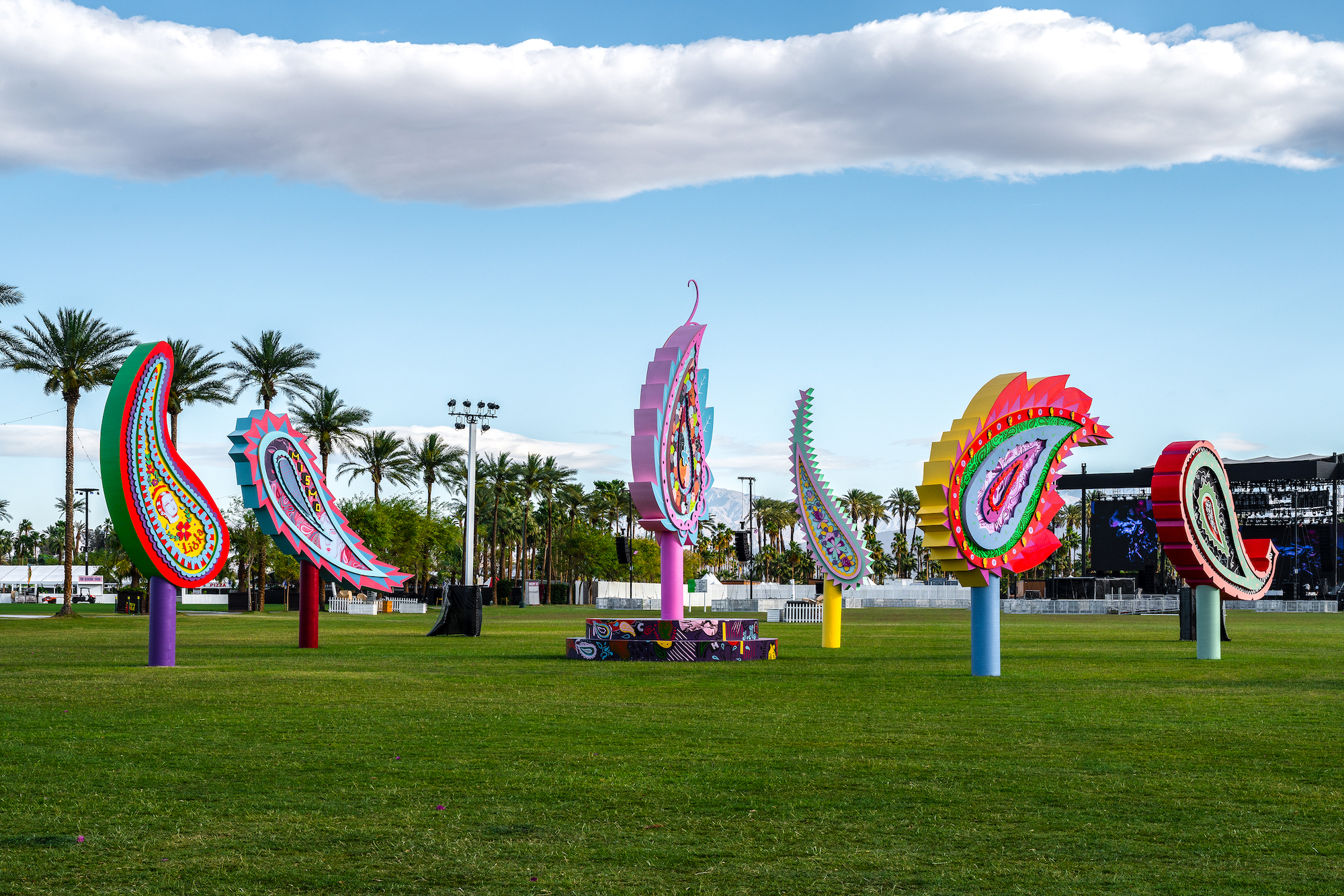
Coachella Valley Music and Arts Festival 2019, Sofia Enriquez, “Mismo,” image by Lance Gerber
Enriquez first engaged with the Studio as a camping festival-goer in 2014. “I was just like, ‘How can I help? Who’s running this show? I want to contribute.’” She started helping Scheideman with the Studio, then took a job in the art department as a welder to finance her own creative practice. Before she knew it, Lehrer offered her a chance to propose an installation for the fields. In 2019, she presented Mismo, a garden of six massive, colorful paisleys; a motif she often uses in her murals and fashion designs. Creating a large-scale immersive installation for Coachella is a major milestone in any established artist’s career, and a priceless opportunity for an emerging artist. “It just happened, like, naturally,” she said, shrugging humbly.
After a golf cart ride back to the fields, I stumbled into Aaron Hansen, a local Desert Hot Springs muralist who lives “out by the windmills,” painting the environment and landscape of this year’s festival en plein air on a small canvas. “I do murals,” he said, “I like public art, accessible art. I like putting it out for everyone. I usually go big. This is the smallest I ever paint.”
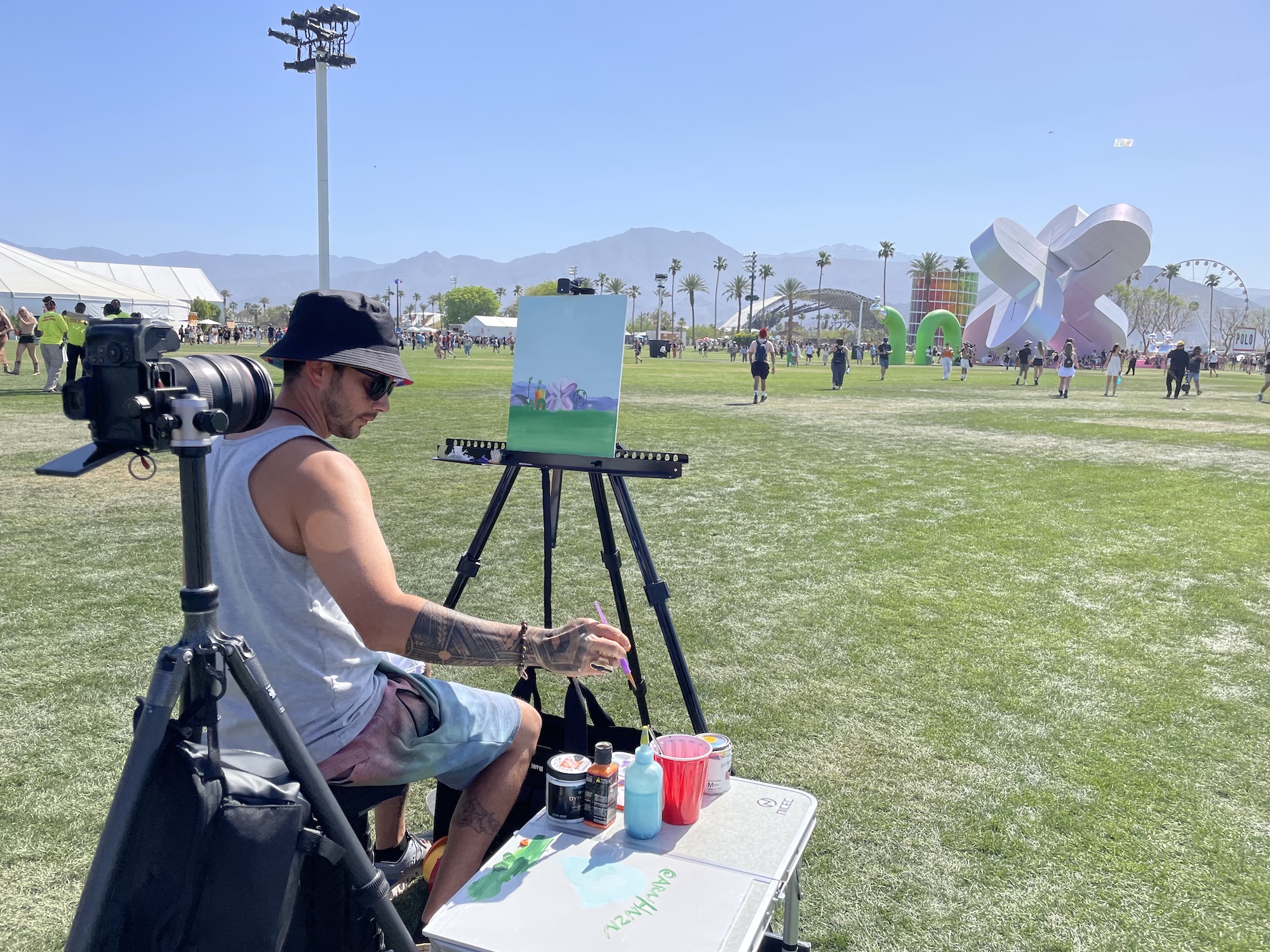
Aaron Hansen paints en plein air for Coachella. Image by Bianca Collins.
Hansen typically blocks off all of April to make space for the increased opportunities available to artists in the area during the festival run. “I’ve done this festival so many ways. When it was just 1 weekend – since forever, you know? I did a lot of production backstage, some brand life painting. Last year I helped my friend Mr. Baby paint 100 feet of lockers.” I asked him why he thought Coachella had invited him to activate the fields in this way this year. “I think what they wanna show is, you can come here, be creative, be yourself. But, that’s just, me, assuming,” he said, blushing. As I left, he proudly encouraged me to check out his work on the water stations. “I painted four of them with a really nice gradient. Super smooth, with clouds on them. Looks super good.”
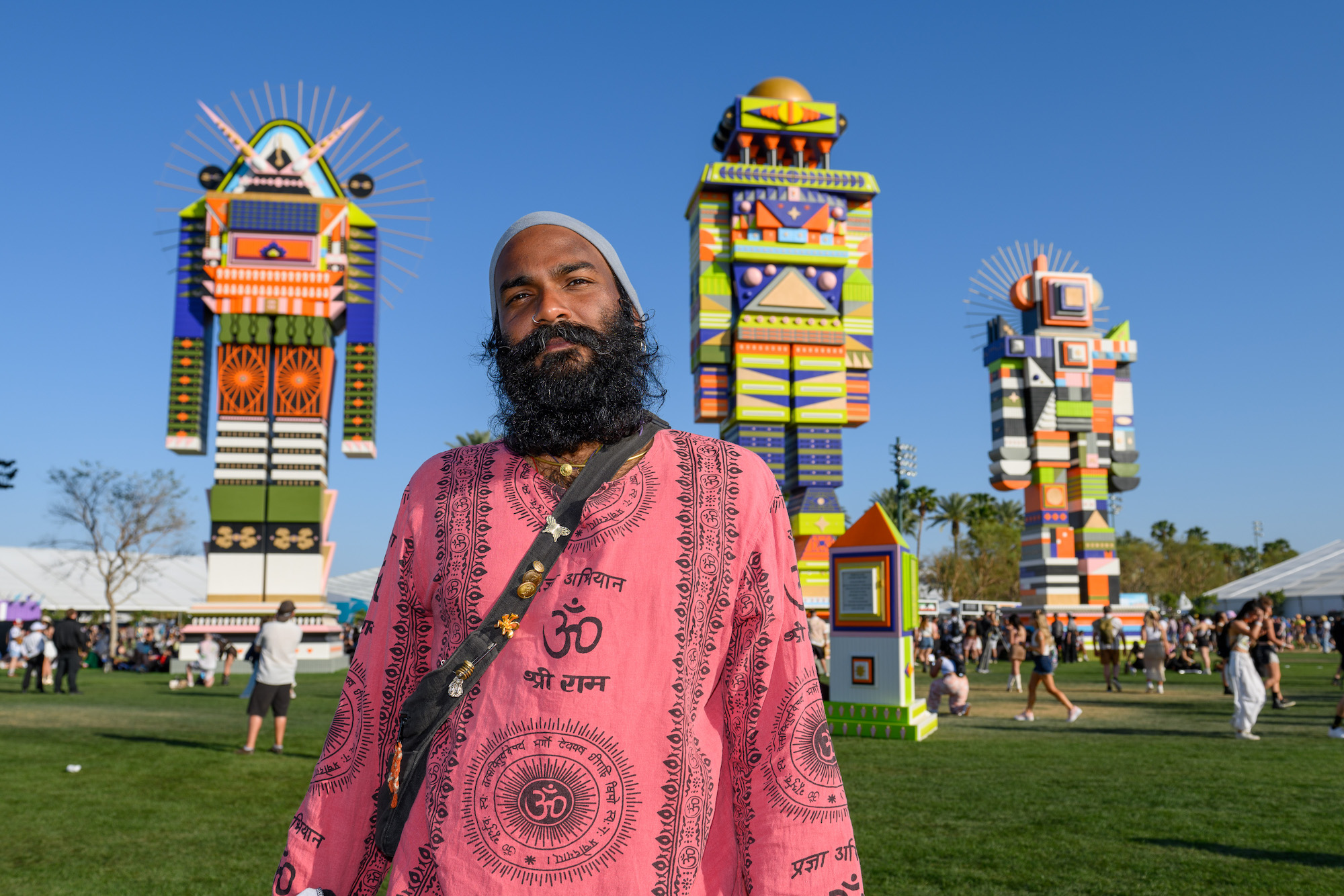
Coachella Valley Music and Arts Festival 2023, Kumkum Fernando with his installation “The Messengers,” photo by David Morrison.
I arrived at The Messengers, a trio of massive, geometrical figures soaring 65-80 feet high by Vietnam-based Sri Lankan artist Kumkum Fernando. Standing on plinths with a base of steps and covered in lime green, bright orange and midnight blue patterns inspired by Tibetan temples, their solid presence offered protective shade for revelers resting in the late afternoon sun.
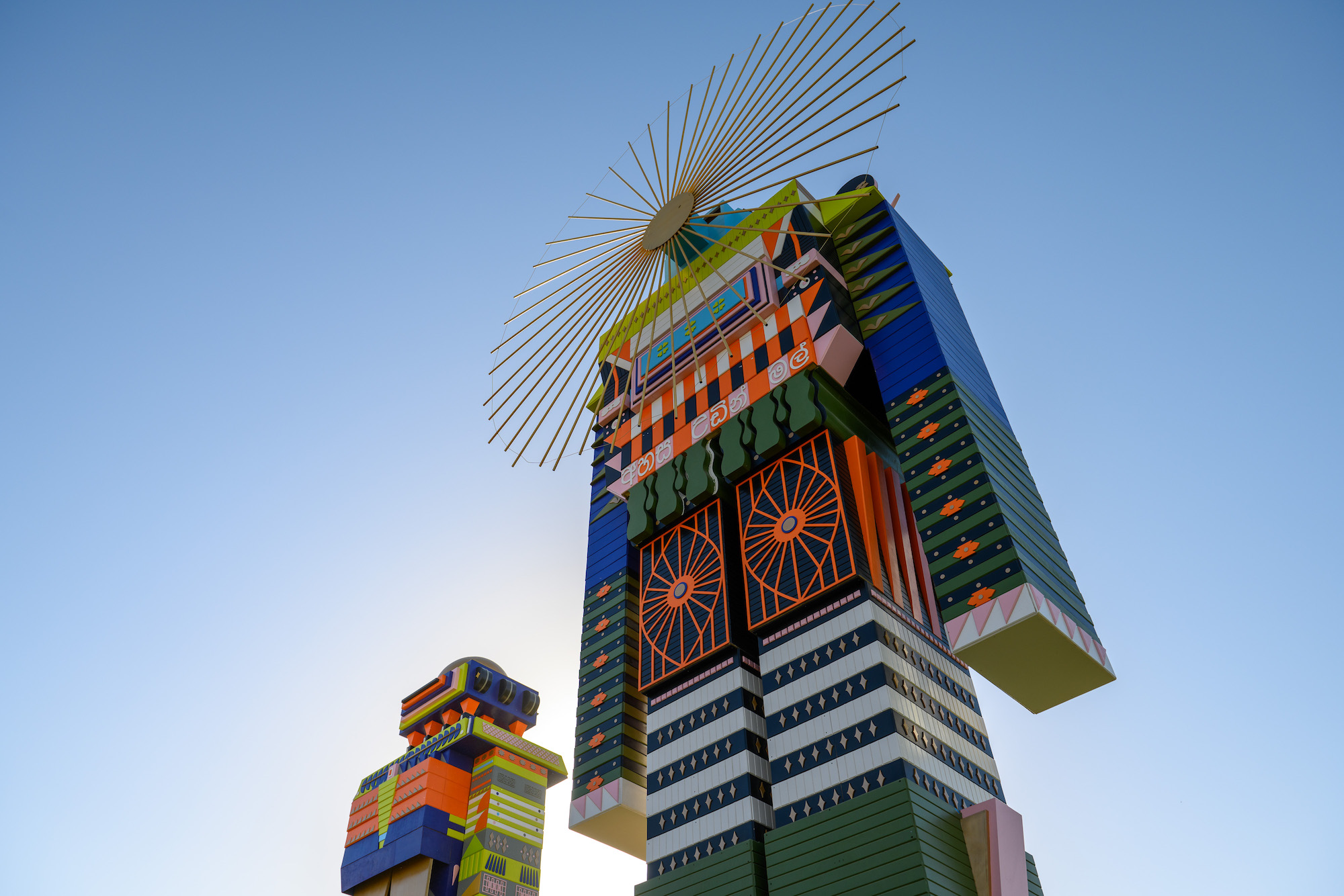
Coachella Valley Music and Arts Festival 2023, detail view of Kumkum Fernando’s “The Messengers,” photo by David Morrison
Fernando calls his figures idols, inspired by South and Southeast Asian mythology and architecture and personal stories from his life experiences. The towering central idol with a jetpack, Flying Ilo, is named for his son, Kai Ilo, who he only sees once a quarter. “It’s dedicated to loved ones who can’t be with us in this moment… Now, Ilo can come to me whenever he wants.” The leftmost idol decorated with South Asian temple flower drawings, Empress of the Garden, represents the guardian spirit of Mother Nature and the stories he grew up with as a Buddhist. The rightmost idol, Lotus 1, includes hidden morse codes for peace and love. “These interdimensional creatures, they’re here to celebrate together. They’re here to party and celebrate the message of peace.”
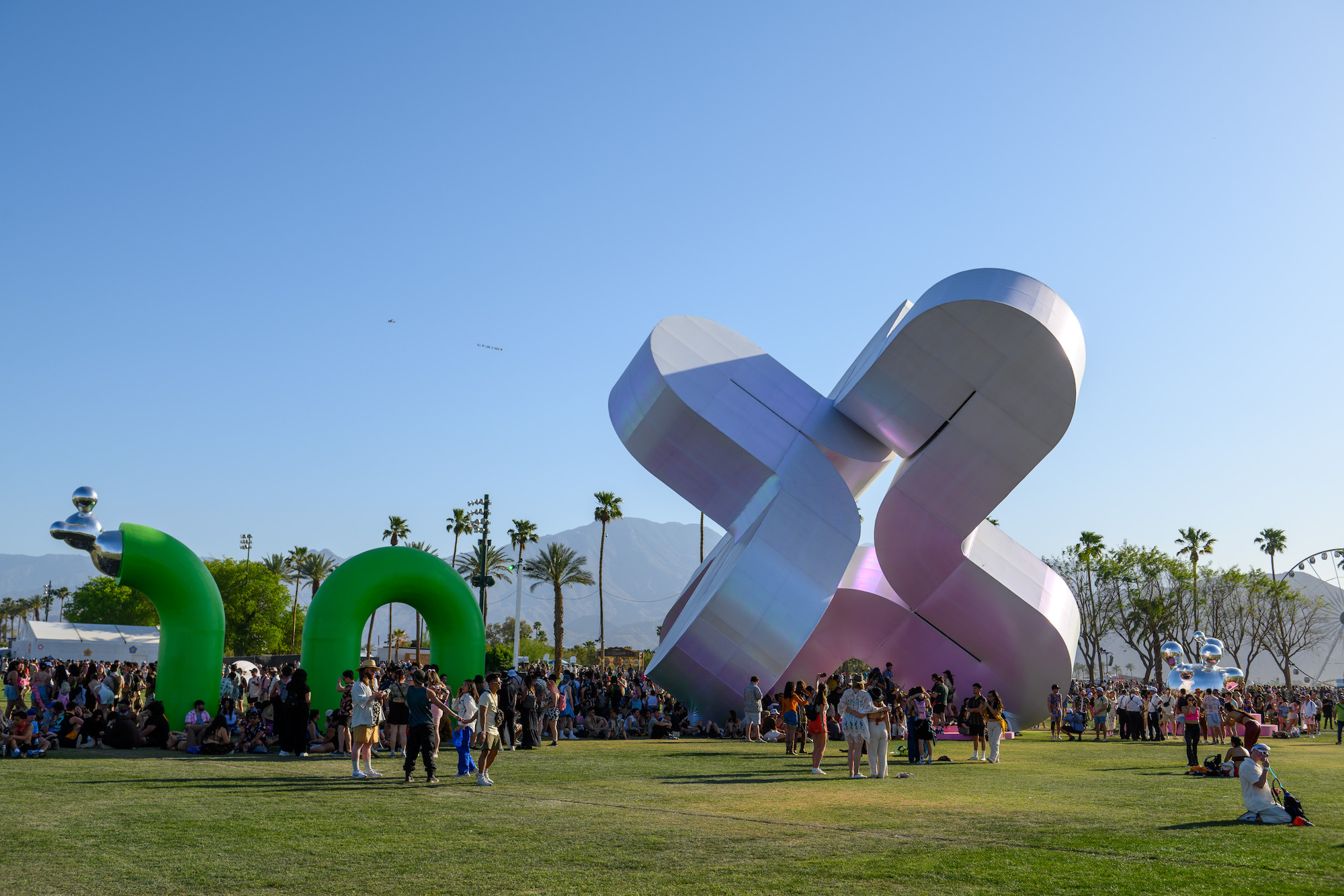
Coachella Valley Music and Arts Festival 2023, installation view of Güvenç Özel’s “Holoflux,” photo by David Morrison
Next, I met with Güvenç Özel, a Turkish artist, architect and “Coachella veteran,” whose 60-foot tall Holoflux installation reflects his deep exploration of the intersection of design and technology. A massive spherical X marks the spot between the two most popular stages, covered in iridescent fabric and flanked by green-screen-green undulating pipes with chrome forms spilling out.
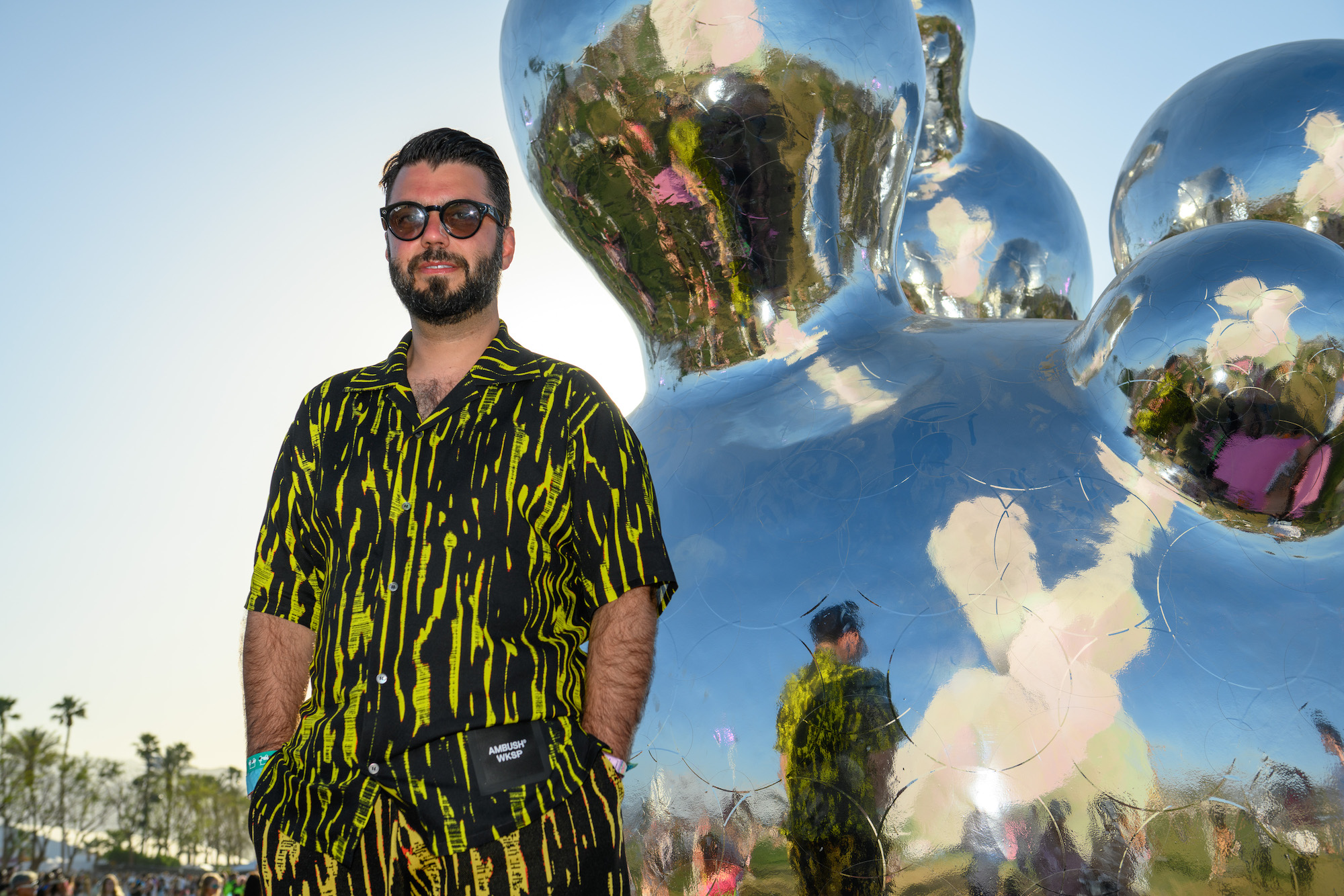 Coachella Valley Music and Arts Festival 2023, Güvenç Özel with his installation “Holoflux,” photo by David Morrison
Coachella Valley Music and Arts Festival 2023, Güvenç Özel with his installation “Holoflux,” photo by David Morrison
It appears as a mirage from afar, an impossible computer rendering of a continuous form folding back in on itself in a physical space. At night, 360 projections map the installation to create the impression that the entire form is covered with 3D animation. Nighttime projections reflect the continuity between nature, humans, and technology; a contemporary holy trilogy. Images of corals turning into robots turning into humans turning into crystals turning into rocks and into trees and into robots again remind people that “tech isn’t alien to nature. Tech is the output of nature through us, that is, actually, the evolution of nature.”
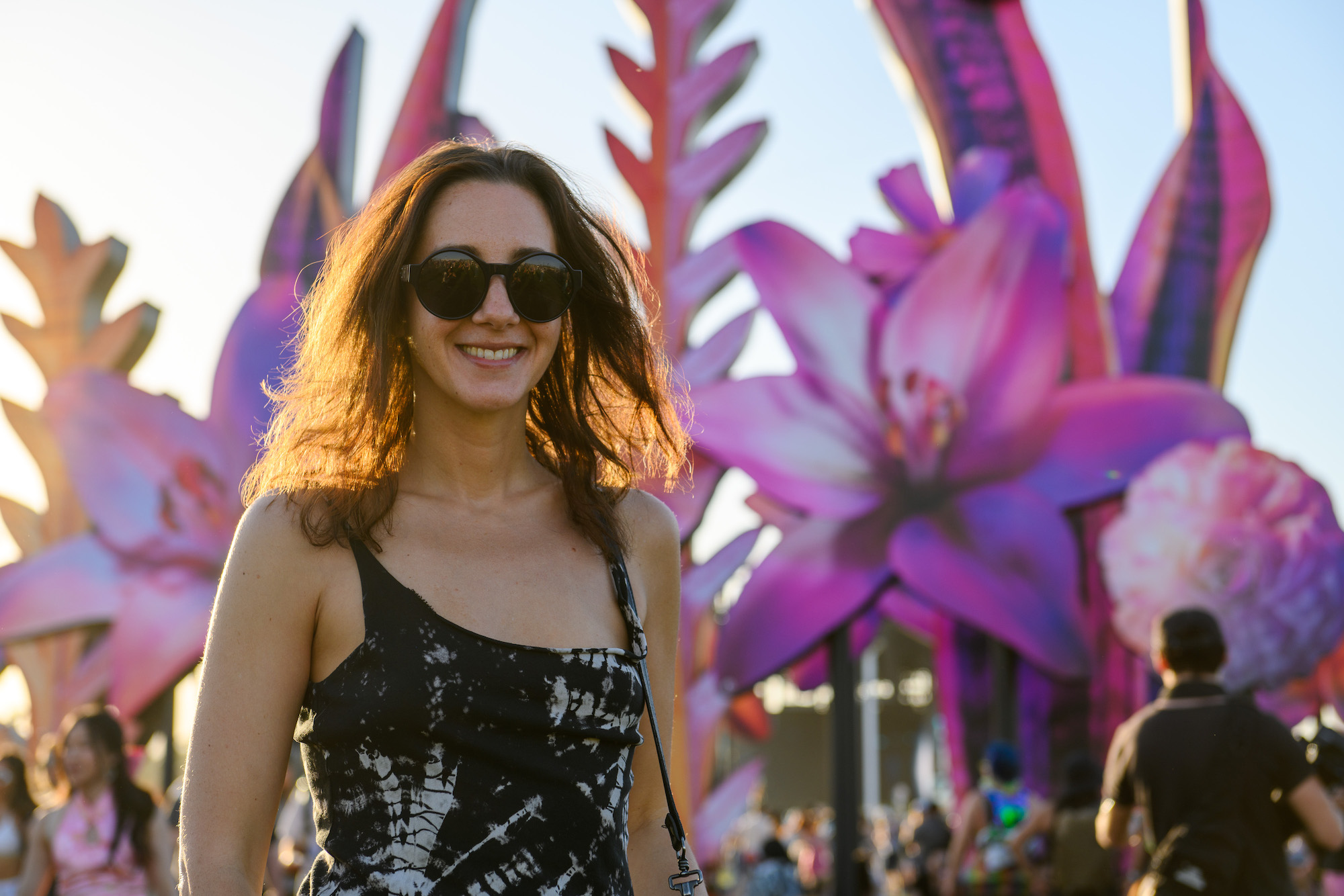
Coachella Valley Music and Arts Festival 2023, Maggie West with her installation “Eden,” photo by David Morrison
Los Angeles-based Maggie West’s Eden is not filled with the sort of flora you might expect to find in the desert, but flowers and plants we see regularly, like lilies and snake plants. Reexamined through the lens of colored lighting in cool and warm tones, 20 steel structures feature high-resolution images of plants in a warm palette on one side and a cool palette on the other. At night, the installation glows with projections that mimic naturally occurring lighting effects, like those of fireflies, lightning, and bioluminescent plankton.
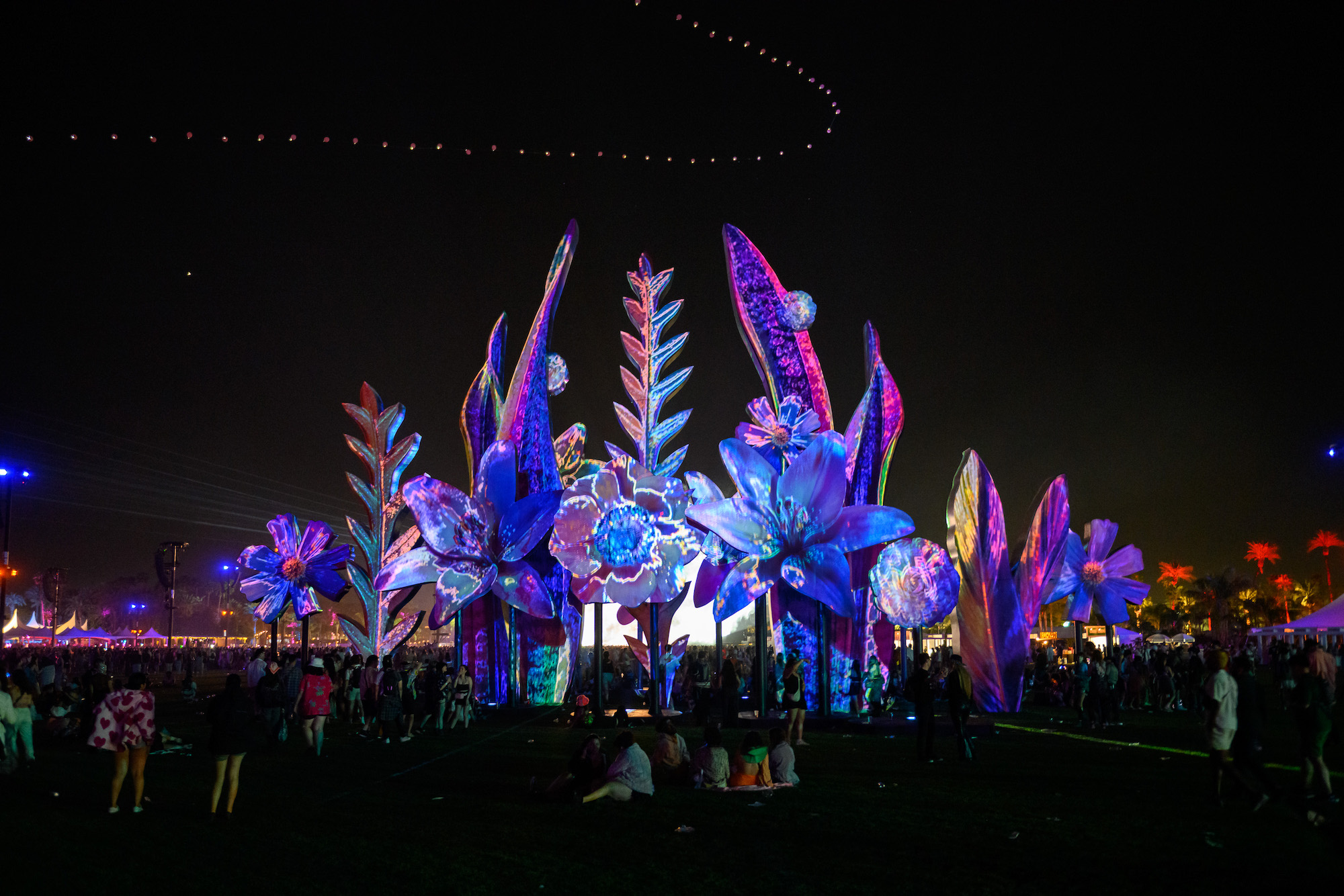
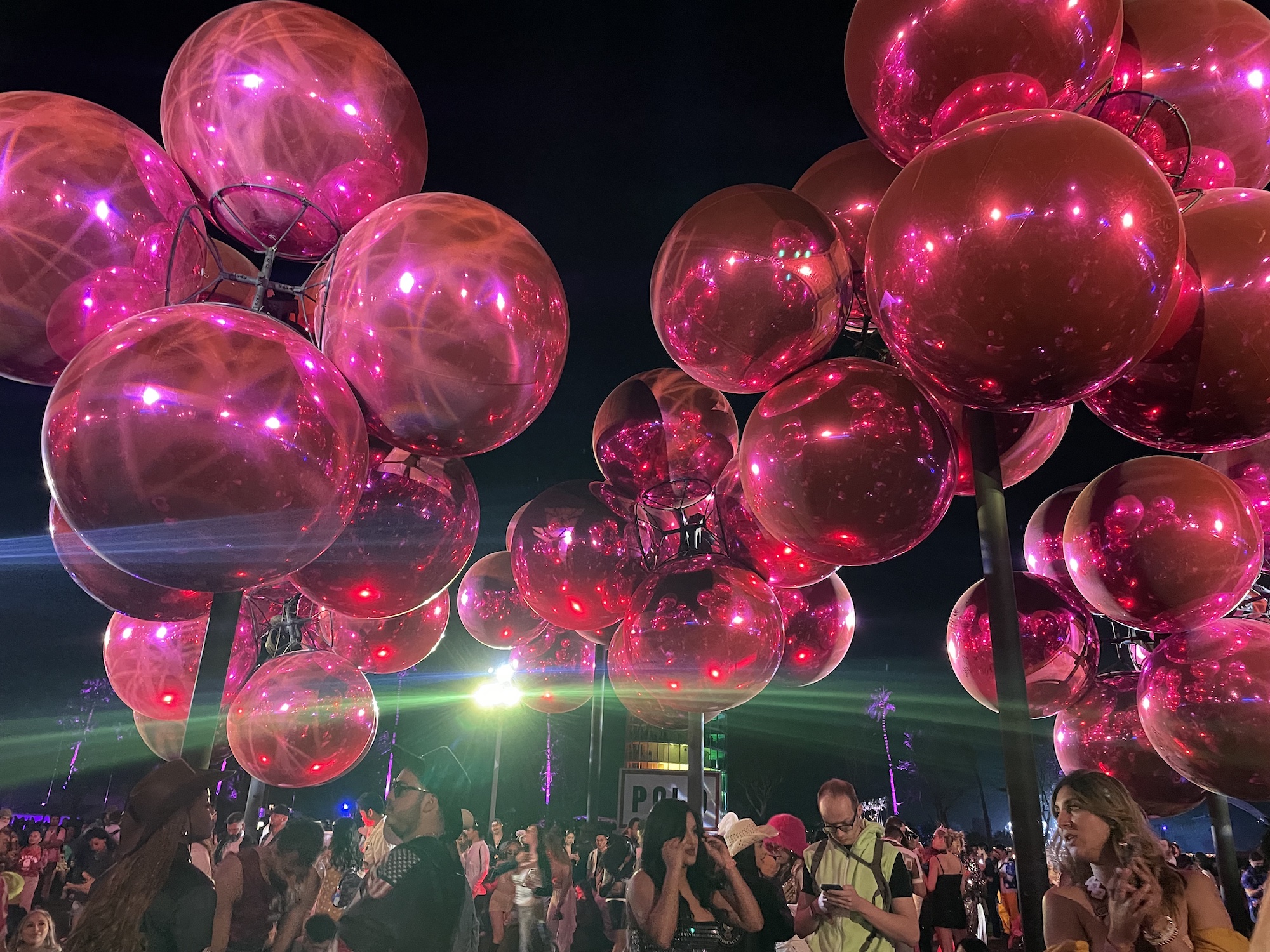
Coachella Valley Music and Arts Festival 2023 installation view of Vincent Leroy’s “Molecular Cloud,” photo by Bianca Collins.
The fourth and final major new installation on the fields in 2023 was the Paris-based French artist Vincent Leroy’s Molecular Cloud positioned by the main stage, made from clusters of large, bright pink, glossy inflatable objects hoisted high as massive mobiles above festival-goers’ heads. Here, we are encouraged to focus on the impact of perception and movement, but most folks were focused on photographing their reflections, chasing the shade of the clouds (or “pink balls,” as I heard them referenced many times), and locating their friends in the fray. This is Coachella, after all.
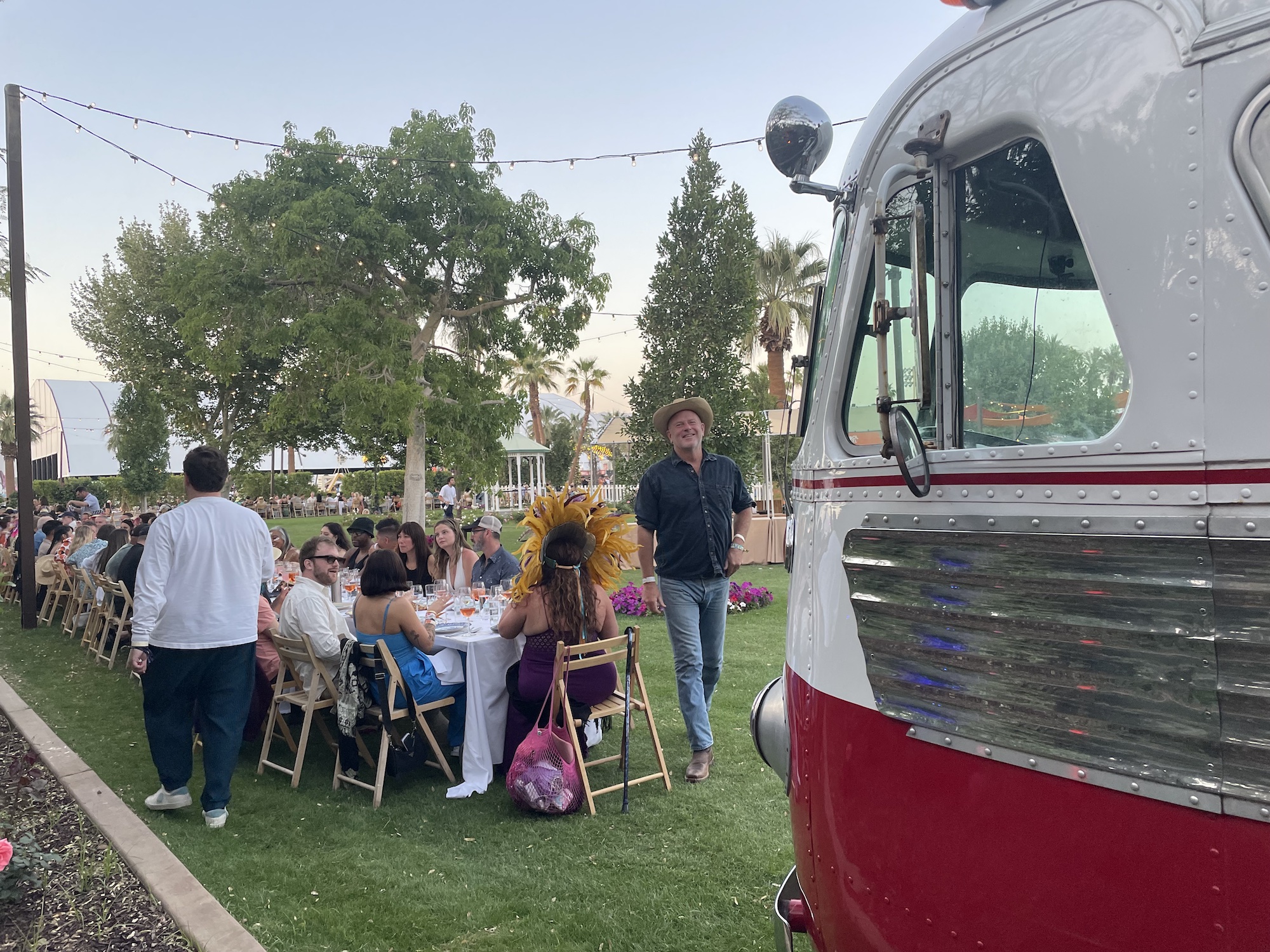
Jim Denevan for Outstanding in the Field. Image by Bianca Collins.
I wrapped up my day with a last-minute invitation to the best meal in town during the festival, provided by Outstanding in the Field. As usual, their iconic long dining table was set up in the rose garden. This year, I had the delight of enjoying a meal by Nigerian Chef Tolu Eros while chatting with OITF’s founder and land artist Jim Denevan and the Desert X team about creating site-specific land art in the desert.
From Cathedral City to Vietnam, Coachella’s steadfast support of local and international artists in their renowned art program is not only remarkable, but deliberate. “In selecting projects from around the world, our intention is to bring together artists, architects and designers whose practices invite participation, inclusion, and transformation,” said Lehrer. The result is a multi-faceted kaleidoscope of a festival, reflecting a global audience while rooted firmly in the Coachella Valley.

